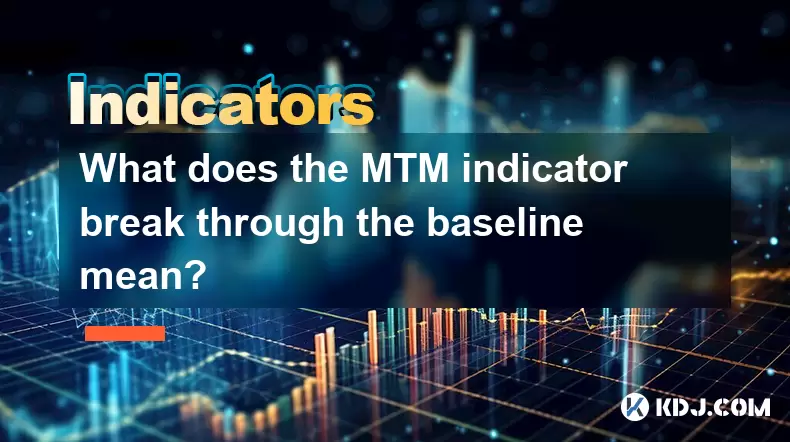-
 Bitcoin
Bitcoin $118600
0.36% -
 Ethereum
Ethereum $3855
1.06% -
 XRP
XRP $3.195
-0.09% -
 Tether USDt
Tether USDt $1.000
-0.04% -
 BNB
BNB $844.5
6.23% -
 Solana
Solana $191.3
2.83% -
 USDC
USDC $0.9997
-0.01% -
 Dogecoin
Dogecoin $0.2376
0.10% -
 TRON
TRON $0.3242
0.83% -
 Cardano
Cardano $0.8222
0.13% -
 Hyperliquid
Hyperliquid $45.26
6.53% -
 Sui
Sui $4.200
-2.56% -
 Stellar
Stellar $0.4336
-1.24% -
 Chainlink
Chainlink $18.86
0.28% -
 Hedera
Hedera $0.2796
-1.75% -
 Bitcoin Cash
Bitcoin Cash $583.3
-1.84% -
 Avalanche
Avalanche $27.06
8.09% -
 Litecoin
Litecoin $112.3
-1.16% -
 Toncoin
Toncoin $3.353
0.58% -
 UNUS SED LEO
UNUS SED LEO $8.968
-0.11% -
 Shiba Inu
Shiba Inu $0.00001395
-0.54% -
 Ethena USDe
Ethena USDe $1.001
-0.03% -
 Uniswap
Uniswap $10.76
0.69% -
 Polkadot
Polkadot $4.175
0.26% -
 Monero
Monero $326.7
1.07% -
 Bitget Token
Bitget Token $4.665
1.61% -
 Dai
Dai $0.9998
-0.02% -
 Pepe
Pepe $0.00001271
0.32% -
 Cronos
Cronos $0.1416
2.01% -
 Aave
Aave $299.3
1.15%
What does the MTM indicator break through the baseline mean?
The MTM indicator measures price momentum in crypto markets, with a break above or below zero signaling potential bullish or bearish shifts, often used alongside volume and other indicators for confirmation.
Jul 28, 2025 at 05:56 pm

Understanding the MTM Indicator and Its Core Function
The MTM (Momentum) indicator is a technical analysis tool used in the cryptocurrency market to measure the rate of change in price over a specified period. It reflects the speed at which prices are rising or falling, helping traders identify potential trend reversals or continuations. The MTM is calculated by subtracting the closing price from a certain number of periods ago from the current closing price. The result is plotted as a line that oscillates above and below a baseline, typically set at zero.
When the MTM value is above the baseline (zero), it indicates that the current price is higher than the price from the previous selected period, suggesting upward momentum. Conversely, when the MTM value is below the baseline, it signals that the current price is lower, indicating downward momentum. A break through the baseline—that is, when the MTM line crosses from negative to positive or vice versa—is considered a significant event in technical analysis.
What a Break Through the Baseline Signifies
A break through the baseline occurs when the MTM line crosses the zero line. This movement is interpreted as a shift in market sentiment. For instance, when the MTM crosses above the zero line, it means that the current closing price has surpassed the closing price from the lookback period (e.g., 10 days ago), indicating that buying pressure is increasing. This is often seen as a bullish signal in the cryptocurrency market.
On the other hand, when the MTM crosses below the zero line, it suggests that the current price is lower than the price from the earlier period, reflecting growing selling pressure. This is interpreted as a bearish signal. Traders closely monitor these crossovers because they may precede changes in price trends, especially when confirmed by volume or other indicators.
It is important to note that the baseline break does not guarantee a sustained trend. In highly volatile crypto markets, false signals can occur due to sudden news events or whale movements. Therefore, the MTM should be used in conjunction with other tools such as moving averages, RSI, or MACD to improve accuracy.
How to Set Up the MTM Indicator on a Crypto Trading Platform
To analyze MTM signals effectively, you must first set up the indicator on your trading platform. Most platforms, including TradingView, Binance, or MetaTrader, support the MTM indicator. The following steps outline how to apply it:
- Open your preferred trading chart and select the cryptocurrency pair you want to analyze.
- Click on the "Indicators" button, usually located at the top of the chart interface.
- Search for "Momentum" or "MTM" in the indicator library.
- Select the MTM indicator and add it to the chart.
- Adjust the period setting—common values are 10, 14, or 20 periods—depending on your trading strategy.
- Observe the MTM line and its relationship to the zero baseline.
Once configured, the MTM line will dynamically update with each new candle. Pay close attention to the moments when the line intersects the zero level, as these are potential entry or exit points.
Interpreting MTM Baseline Breaks in Real-Time Crypto Charts
In real-time trading, a break through the baseline should be analyzed within the broader market context. For example, if Bitcoin has been in a prolonged downtrend and the MTM line rises above zero, this could signal the beginning of a recovery. However, confirmation is essential. Look for:
- A corresponding increase in trading volume during the crossover.
- Alignment with support levels or bullish candlestick patterns like hammers or engulfing patterns.
- Confluence with other momentum indicators showing similar bullish signals.
Suppose Ethereum’s MTM crosses above zero after being negative for several days. If this happens near a key support level such as $3,000 and is accompanied by a surge in volume, the signal gains credibility. Conversely, if the crossover occurs without volume support or during a sideways market, it may be a false breakout.
Short-term traders might use a lower MTM period (e.g., 5) for quicker signals, while long-term investors may prefer a 14 or 20-period MTM for more reliable, less noisy readings.
Common Pitfalls and Misinterpretations of MTM Baseline Breaks
Despite its usefulness, the MTM indicator is prone to misinterpretation. One common mistake is acting on every baseline crossover without considering market conditions. In ranging markets, the MTM may cross the zero line multiple times, leading to whipsaws and repeated losses.
Another issue arises from lagging price action. Since MTM is based on past prices, it may confirm a trend only after a significant portion of the move has already occurred. This delay can reduce profitability, especially in fast-moving crypto markets.
Additionally, traders sometimes overlook the magnitude of the MTM value. A shallow crossover just above zero may lack strength, while a strong breakout with the MTM sharply rising indicates more robust momentum. Comparing the current MTM level to historical extremes can help assess the strength of the signal.
Using MTM in isolation increases risk. It is safer to combine it with trend-following indicators like the 50-day or 200-day moving average to filter out counter-trend signals.
Practical Example: MTM Break in a Cryptocurrency Pair
Consider a scenario involving the BNB/USDT pair on Binance. Over the past two weeks, BNB has been declining, and the MTM line has remained below zero. On day 15, the price forms a bullish hammer candle near $280, and the next day, the MTM line crosses above the zero line.
This crossover suggests that momentum is shifting from bearish to bullish. To validate the signal:
- Check if the 24-hour trading volume has increased by at least 30% compared to the 7-day average.
- Confirm that the price is also above the 50-period EMA on the 4-hour chart.
- Ensure that the RSI is moving out of oversold territory (above 30).
If all conditions align, a long position could be initiated with a stop-loss placed just below the recent swing low. The MTM baseline break serves as the initial trigger, but the confluence of factors increases the probability of success.
Frequently Asked Questions
What is the default period setting for the MTM indicator in most trading platforms?
The default period is typically 14, though this can vary. Some platforms use 10 or 12 as the standard. Users can adjust it based on their trading timeframe—shorter periods for scalping, longer for swing trading.
Can the MTM indicator be used on all cryptocurrency timeframes?
Yes, the MTM indicator works on all timeframes, from 1-minute charts to weekly charts. However, signals on higher timeframes (e.g., daily or weekly) are generally more reliable due to reduced noise.
Does a baseline break always lead to a price reversal?
No, a baseline break does not guarantee a reversal. It only indicates a change in momentum. The price may continue sideways or reverse temporarily. Confirmation from price action or volume is necessary.
How does the MTM differ from the Rate of Change (ROC) indicator?
While both measure momentum, MTM calculates the absolute price difference, whereas ROC expresses the change as a percentage. MTM values are not normalized, making ROC more suitable for comparing assets with different price levels.
Disclaimer:info@kdj.com
The information provided is not trading advice. kdj.com does not assume any responsibility for any investments made based on the information provided in this article. Cryptocurrencies are highly volatile and it is highly recommended that you invest with caution after thorough research!
If you believe that the content used on this website infringes your copyright, please contact us immediately (info@kdj.com) and we will delete it promptly.
- Avalanche (AVAX) Price Pump Incoming? Analysts Weigh In
- 2025-07-29 06:50:12
- Presales, Investment, July 2025: What's Hot and What's Not
- 2025-07-29 06:30:12
- PayPal, Bitcoin, and Merchants: A New Era of Commerce?
- 2025-07-29 07:10:13
- RUVI Token's Ripple Rally Potential: Audited AI Crypto Heats Up!
- 2025-07-29 04:50:12
- ADA Price, Cardano, SUI & Remittix: Decoding the Latest Crypto Moves
- 2025-07-29 04:50:12
- Solana, ARK Invest, and Staking: A New Era of Institutional Crypto?
- 2025-07-29 05:30:12
Related knowledge

What does it mean when the EMA combination crosses upward for the first time after sideways trading?
Jul 28,2025 at 03:43pm
Understanding the EMA and Its Role in Technical AnalysisThe Exponential Moving Average (EMA) is a widely used technical indicator in cryptocurrency tr...

What signal does the ROC send when it rises rapidly from a low level and breaks through the zero axis?
Jul 27,2025 at 10:15am
Understanding the Rate of Change (ROC) IndicatorThe Rate of Change (ROC) is a momentum-based oscillator used in technical analysis to measure the perc...

What does it mean when the price breaks through the double bottom neckline and the moving averages are arranged in a bullish pattern?
Jul 28,2025 at 10:57am
Understanding the Double Bottom PatternThe double bottom is a widely recognized reversal chart pattern in technical analysis, particularly within the ...

What signal does the DMA fast line cross the slow line above the zero axis?
Jul 28,2025 at 05:42am
Understanding the DMA Indicator and Its ComponentsThe DMA (Difference of Moving Averages) indicator is a technical analysis tool used in cryptocurrenc...

What does it mean that the rebound is blocked after the moving average is arranged in a short position for the first time?
Jul 26,2025 at 10:51am
Understanding the Short-Term Moving Average ConfigurationWhen traders refer to a 'short position arrangement' in moving averages, they are describing ...

What does it mean that the ZIGZAG low point is raised and the high point breaks through the previous peak?
Jul 28,2025 at 03:28am
Understanding the ZIGZAG Indicator in Cryptocurrency TradingThe ZIGZAG indicator is a technical analysis tool widely used in cryptocurrency trading to...

What does it mean when the EMA combination crosses upward for the first time after sideways trading?
Jul 28,2025 at 03:43pm
Understanding the EMA and Its Role in Technical AnalysisThe Exponential Moving Average (EMA) is a widely used technical indicator in cryptocurrency tr...

What signal does the ROC send when it rises rapidly from a low level and breaks through the zero axis?
Jul 27,2025 at 10:15am
Understanding the Rate of Change (ROC) IndicatorThe Rate of Change (ROC) is a momentum-based oscillator used in technical analysis to measure the perc...

What does it mean when the price breaks through the double bottom neckline and the moving averages are arranged in a bullish pattern?
Jul 28,2025 at 10:57am
Understanding the Double Bottom PatternThe double bottom is a widely recognized reversal chart pattern in technical analysis, particularly within the ...

What signal does the DMA fast line cross the slow line above the zero axis?
Jul 28,2025 at 05:42am
Understanding the DMA Indicator and Its ComponentsThe DMA (Difference of Moving Averages) indicator is a technical analysis tool used in cryptocurrenc...

What does it mean that the rebound is blocked after the moving average is arranged in a short position for the first time?
Jul 26,2025 at 10:51am
Understanding the Short-Term Moving Average ConfigurationWhen traders refer to a 'short position arrangement' in moving averages, they are describing ...

What does it mean that the ZIGZAG low point is raised and the high point breaks through the previous peak?
Jul 28,2025 at 03:28am
Understanding the ZIGZAG Indicator in Cryptocurrency TradingThe ZIGZAG indicator is a technical analysis tool widely used in cryptocurrency trading to...
See all articles

























































































